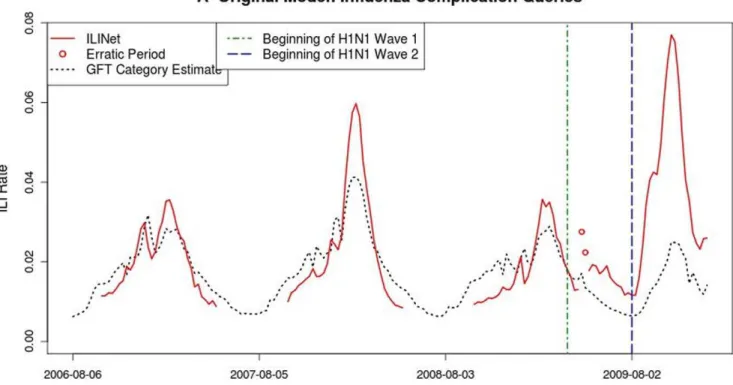Assessing Google flu trends performance in the United States during the 2009 influenza virus A (H1N1) pandemic.
Texto
Imagem


![Figure 3 shows ILINet data and estimates from single-query models for the original-model queries [symptoms of flu], [symptoms of bronchitis], and [symptoms of pneumonia]](https://thumb-eu.123doks.com/thumbv2/123dok_br/18390607.357505/6.918.93.834.116.303/figure-estimates-original-symptoms-symptoms-bronchitis-symptoms-pneumonia.webp)

Documentos relacionados
The purpose of this study was to assess vi- ral etiologies among the samples collected from hospitalized patients with suspected influenza during the first pandemic wave of
This study aimed to iden- tify the risk factors for need of MV and to describe deaths that occurred in children due to influenza A(H1N1)pdm09 infections during the first pandemic
Assessing Google flu trends performance in the United States during the 2009 influenza virus A (H1N1) pandemic.. Olson DR, Konty KJ, Paladini M, Viboud
Based on nucleotide sequence data, viruses circulating in Finland during the first 9 months after the emergence of the novel 2009 pandemic influenza A(H1N1) virus differed
We also observed that transmission of the influenza A(H1N1)pdm09 virus during the pandemic in Madagascar, like in other countries, appeared to be inevitable, presumably due to
To investigate whether the occurrence of severe 2009 H1N1 pandemic influenza infection in previously healthy adults is associated with cellular immune responses we examined the
In the present study, we compared a influenza A(H1N1)pdm09 virus, a seasonal H3N2 strain and a prototypic H1N1 strain, and examined whether immunosuppression is involved in the
This form of deposition prevents the cleavage of these proteins by proteases present in the cell cytoplasm (Shutov, Baumlein, Blattner, & Muntz, 2003) and enables their